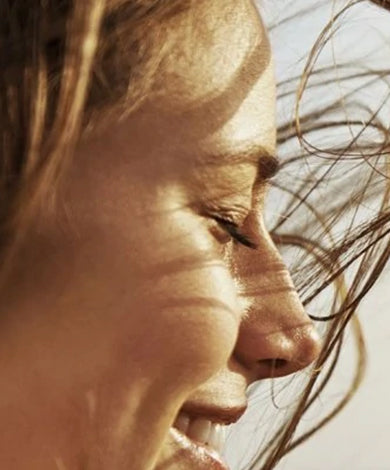Secret Santa Sale – Get Up to 30% Off + Exclusive Pouch & Gloves on min spend of Rs. 1999/-
Free shipping on all orders
Free Trial-Kits on all orders
₹ 0
₹ 0
₹ 0
Secret Santa Sale – Get Up to 30% Off + Exclusive Pouch & Gloves on min spend of Rs. 1999/-
Free shipping on all orders
Free Trial-Kits on all orders


UNDERSTAND MY SKIN
To keep hair healthy, you must first take care of the scalp where the bulb is rooted because this is where cells multiply with fuel from essential elements: oxygen, nutrients and mineral salts. Hair and scalp hygiene and treatment products must be adapted based on potential problems like itching, irritation, hair loss and hair that is oily, dry or thin.

We have between 100,000 and 150,000 hairs (up to 200,000 for red hair) implanted in our scalp.
Each one is made up of a root or hair bulb and a hair shaft, which is the hair itself.
Hair is essentially composed of keratin and melanin, the pigment that provides its natural colour. Hair growth occurs when bulb cells multiply and are pushed up, forming the shaft.
Therefore, it’s very important that the scalp - or in other words, the area where the bulb is implanted - is healthy and provides the nutritional elements needed to keep hair alive.



Even though effects are visible on the hair, all the action takes place on the scalp.
Wash your hair and scalp 2 to 3 times a week with a mild shampoo containing:
Try not to scratch your scalp so you do not make its condition worse. An suitable medicated shampoo generally soothes the scalp.
They are heavy, lack volume and usually look oily, especially at the roots. The root cause of these effects is hyperseborrhoea, which can have multiple causes.
The excess sebum accumulates on the roots, which then look oily. Hair is heavy and flat, tangling together and often looking dirty because sebum traps dirt in the air and making it stick easily to the hair.
This is the opposite situation.
The hair is dry, brittle, fragile, difficult to untangle and style, and has split ends.
A dry scalp leads to dry hair. This is caused by a sebum deficiency, which can be an inherent characteristic in people who naturally secrete very little sebum. Or, it can develop later when dryness is linked to external stresses such as the sun, wind, pollution, sea or pool water, intense brushing or straightening, bleaching or perms. In all cases, the skin barrier no longer fulfils its role, water loss accelerates and hair becomes dry, brittle and rough. Since it lacks hydration, hair is difficult to style and prone to static electricity.
Losing less than 100 hairs per day is absolutely normal because it corresponds to the natural hair cycle. If you lose more than this, you should be concerned about the state of your hair.
When it is not genetic (baldness), excessive hair loss is often related to:



All of these factors will inevitably have an effect on the hair. In addition to hair loss, this may result in fragile, lifeless and dull hair or else oily and fine hair.
Taking a nutritional supplement may be beneficial for hair. In order for it to stimulate, strengthen and densify your hair, this supplement should contain nutrients that stimulate the production of high-quality keratin, limit hyperseborrhoea and promote hair growth. If it is enriched with magnesium, this nutritional supplement may also help combat stress, which can cause hair loss.
If you are experiencing significant and persistent hair loss, you should see a dermatologist.


Oily hair is primarily due to increased sebum secretion by sebaceous glands in the scalp. Called hyperseborrhoea, this phenomenon alone is not responsible for oily hair.
Oily hair may be caused by:
Washing hair too frequently and using overly detergent shampoos risk causing reactive hyperseborrhoea. Indeed, when sebum has been removed after aggressive cleansing, the sebaceous glands may get “excited” and over-secrete, thus making the hair and scalp even oilier.

1/ Massage your scalp before applying your shampoo, performing light circular movements from your neck to the top of your head. This not only stimulates hair growth by improving blood micro-circulation but also optimises the action of specific shampoos.
2/ Use a shampoo and possibly a treatment tailored to your scalp and hair. If you have to wash your hair every day, choose a non-detergent treatment shampoo for daily use.
If the shampoo is medicated, follow your dermatologist’s prescription or your pharmacist’s advice.
3/ Rinse your hair thoroughly with warm water. You should always spend more time rinsing your hair than washing it.






